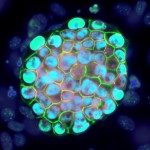Link to Pubmed [PMID] – 20724589
Am. J. Pathol. 2010 Oct;177(4):1958-68
Citrullinemia type I (CTLN1, OMIM# 215700) is an inherited urea cycle disorder that is caused by an argininosuccinate synthetase (ASS) enzyme deficiency. In this report, we describe two spontaneous hypomorphic alleles of the mouse Ass1 gene that serve as an animal model of CTLN1. These two independent mouse mutant alleles, also described in patients affected with CTLN1, interact to produce a range of phenotypes. While some mutant mice died within the first week after birth, others survived but showed severe retardation during postnatal development as well as alopecia, lethargy, and ataxia. Notable pathological findings were similar to findings in human CTLN1 patients and included citrullinemia and hyperammonemia along with delayed cerebellar development, epidermal hyperkeratosis, and follicular dystrophy. Standard treatments for CTLN1 were effective in rescuing the phenotype of these mutant mice. Based on our studies, we propose that defective cerebellar granule cell migration secondary to disorganization of Bergmann glial cell fibers cause cerebellar developmental delay in the hyperammonemic and citrullinemic brain, pointing to a possible role for nitric oxide in these processes. These mouse mutations constitute a suitable model for both mechanistic and preclinical studies of CTLN1 and other hyperammonemic encephalopathies and, at the same time, underscore the importance of complementing knockout mutations with hypomorphic mutations for the generation of animal models of human genetic diseases.

